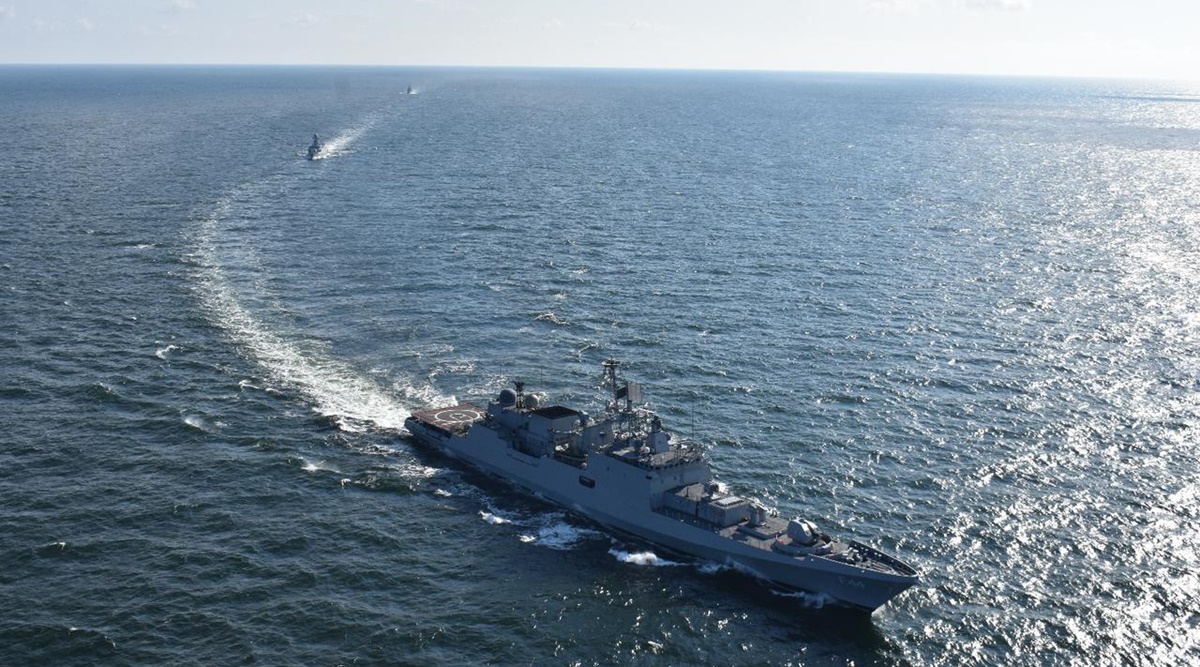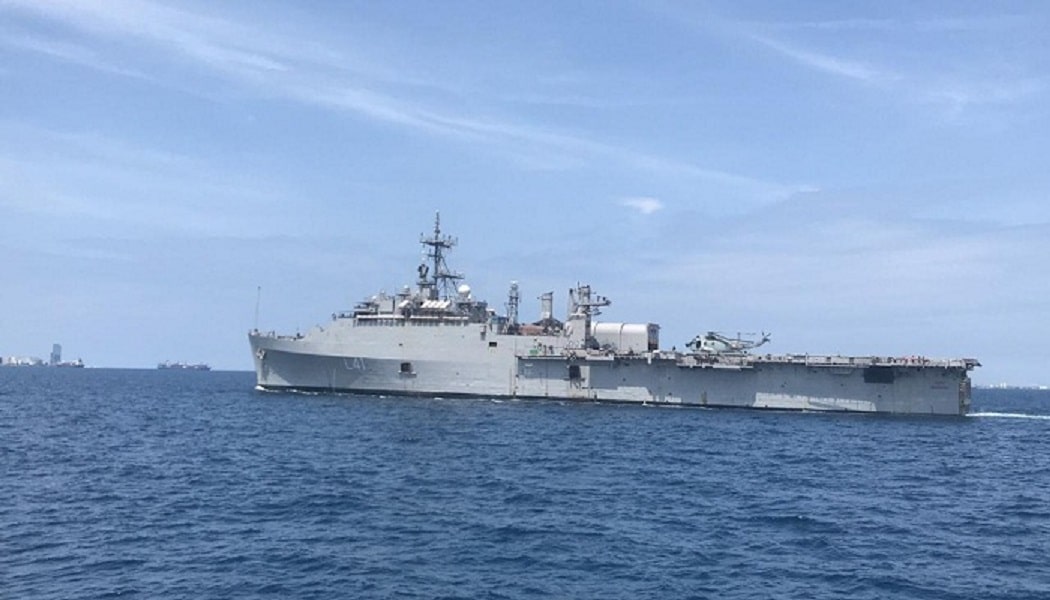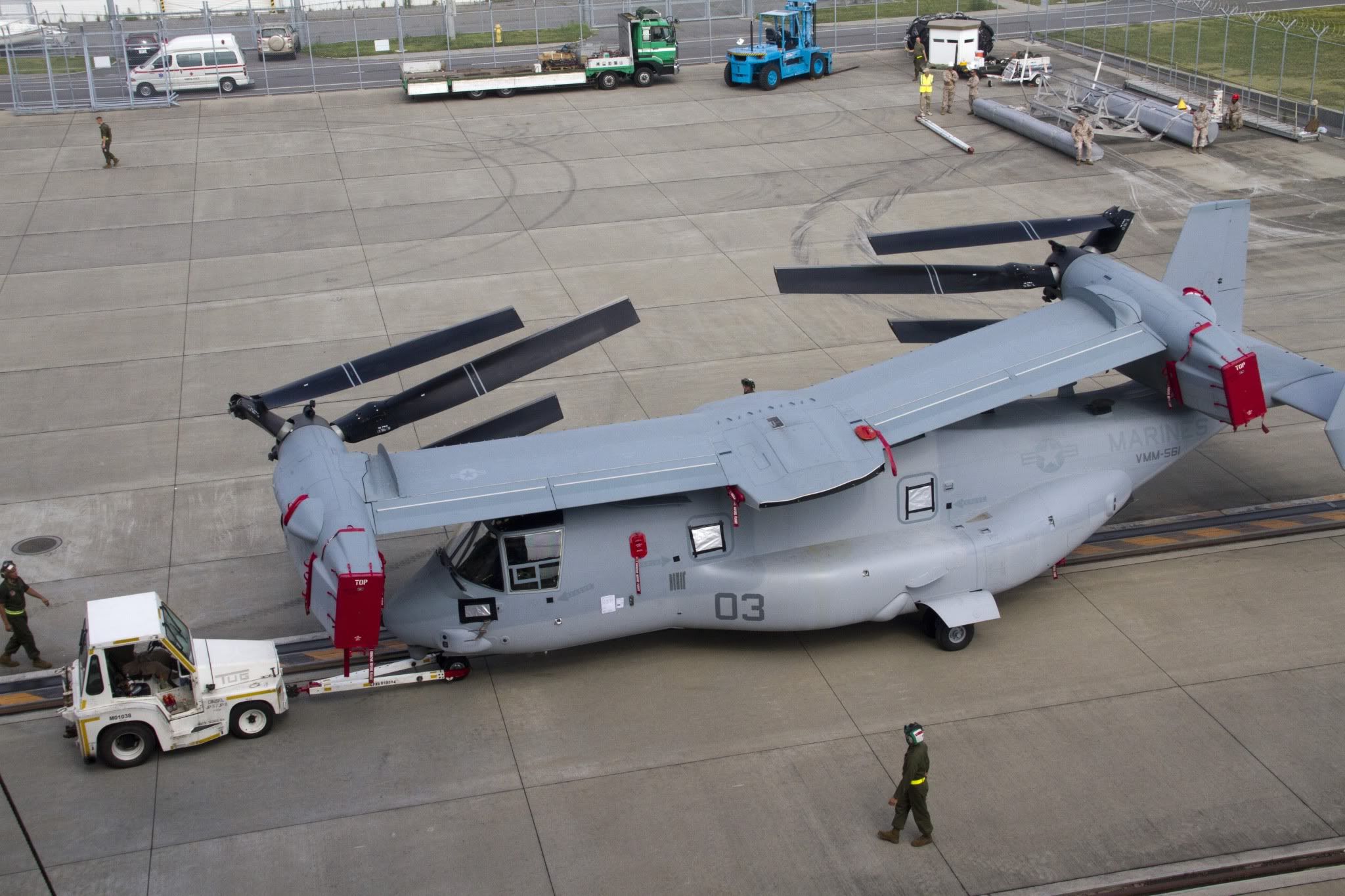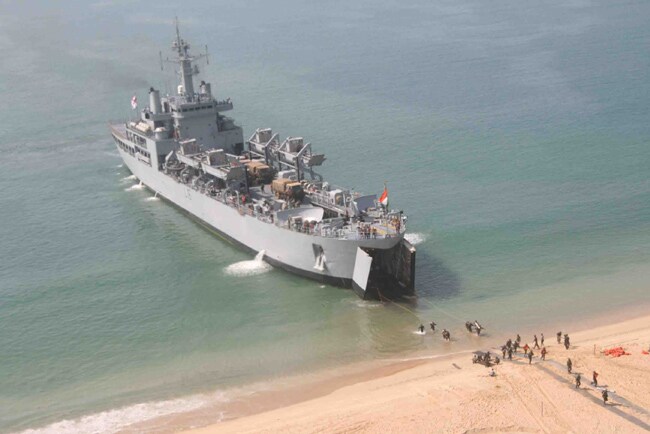Latest Thread
You are using an out of date browser. It may not display this or other websites correctly.
You should upgrade or use an alternative browser.
You should upgrade or use an alternative browser.
I think we have approval for what, 18 aircraft?
Hope they slowly take the numbers up to 26, with permanent basing of a squadron in A&N.
INDIAN defence minister noting India’s growing strength on June 24 said: ‘… India is now among the five major naval powers in the world. We should aim to be among the top three in the next ten to twelve years’, as reported by the Economic Times online the day.
The Indian navy has a wide variety of warships with extensive fire power. Its carrier task force and submarines provide strategic sea basing to project power in distant waters and also ashore from the sea. Its naval assets are keeping its adversaries in check. In the context of an evolving Indo-Pacific geopolitics, India has been resiliently pursuing the expansion of strategic assets.
After World War II, India was the first country in Asia to enter the elite club of aircraft carrier in 1961. Three decades later, India announced in 1991 its plan to construct two aircraft carriers against the backdrop of a three-carrier concept.
In 1993, the retiring naval chief expressed the commitment to a domestically built large aircraft carrier to be ready for trial by the turn of the century. Indian cabinet committee on security cleared the construction of first Indigenous Aircraft Carrier (IAC-1), the 45,000-tonne carrier in 1999. The keel of IAC-1 was laid in 2009. It is expected to join the navy in 2022–2023. After IAC-1, the navy intends to build IAC-2, the 65,000-tonne INS Vishal and commission it in 2030.
Jane’s Fighting Ships mentioned in 1999-2000 that in India, aircraft carrier takes the second place to the nuclear powered submarine programme. Jane’s Defence Weekly July 14, 1999 issue quoted the then naval chief as saying: ‘The carrier is the navy’s number one construction priority’. Debates or differences of opinion on carrier versus submarine still continue. India’s chief of defence staff said in February 2020 that the ‘Indian Navy may not get approval for a third aircraft carrier [IAC-2] any time soon. The reason, he said, was the cost associated with building aircraft carrier, the priority instead should be to bolster the Navy’s submarine fleet.’ The Indian chief of naval staff, on the other hand, told a press conference on December 3, 2020: The ‘third aircraft carrier is absolutely necessary at an immediate basis.’
After the Kargil war in May 1999, India’s cabinet committee on security approved the building of 24 submarines by 2030 and its implementation began after eight years. In 2007, the Indian government cleared the procurement of six submarines known as Project 75. The ‘submarine building programme’ stalled again. After 14 years of delay since P75, the defence acquisition council on June 4, 2021 approved Project 75I, the purchase of six conventional submarines. The suffix ‘I’ denotes ‘Make in India’, meaning all six boats will be built under the strategic partnership model, which refers to the participation of Indian shipyards along with their foreign original equipment manufacturer.
Three submarines of P75 joined the Indian navy between 2017 and 2021. The remaining three are under construction or in trial phases. P75 was scheduled for completion by 2017. It will take a couple of years more to complete all boats to its optimum operational efficiency. Submarines of P75 were to be fitted with domestically developed air independent propulsion system. But the Indian Defence Research and Development Organisation was slow to develop the system delaying the schedule of submarine construction.
Submarines under P75(I) is also planned to have domestically built air independent propulsion system. But the DRDO demonstrated air independent propulsion system in March 2021 on a ‘land-based prototype.’ The DRDO will now develop its marine version for use in submarines. It is thought that submarines under P75I may be fitted out with foreign air independent propulsion system, instead of the one built domestically.
The Indian navy’s nuclear submarine programme began in the 1980s. In 1991, the launch date for the first submarine was set for 2007. the first SSBN INS Arihant was launched on July 26, 2009 and commissioned on February 23, 2016. The second SSBN, INS Arighat, is expected to join the navy in 2022–2023. In the context of growing ‘China factor’ in the Indian ocean, the Indian navy approached the Modi government to amend its ‘30 year submarine building plan.’ The proposal was to drop six conventional submarines from the list and add six nuclear submarines.
India has been operating submarines for about six decades. ‘It has a submarine design bureau. In last three decades, India spent billions of dollars in the transfer of technology every time it bought submarine from Germany, Russia and France’. It is unknown why the transfer of technology was not put to good use.
The first five boats of P75I will have 45 per cent indigenous and the sixth boat will be 60 per cent. It indicates a gap that persists in domestic industrial supply chain. It also means that India will have a considerable dependence on external sources which could delay the project in case of any breakdown in external sources of supply. Any way, the lead submarine of P75I is planned to join the navy in 2031 when 12 old submarines will be nearing the end of service life.
The Indian navy’s ship building programmes have been generally lengthy by international standards. The comptroller and auditor general of India identified procedural and technological reasons that delay ship building projects and increase the cost. In 2011, the comptroller and auditor general published audit reports on three key projects — ‘Project 15A for building three 6,500 tonne frigates [destroyer], Project 17 for three 4,900 tonne frigates and Project 28 for four Anti-Submarine Warfare Corvettes.’
The audit report mentioned that ‘delay in finalisation of structural drawings, timely availability of steel and inadequate infrastructure of the defence public sector shipyards’ were causes for time overruns. The report criticised the ‘navy’s methodology for estimating the cost of ships’ which resulted in ‘unrealistic approvals for funding projects with every likelihood of cost growth at the time of project itself.’
‘The [audit] report observed that the original sanction for the Project 17 in 1998 was Rs 2,250 crore but it was revised to Rs 8,101 crore in 2006. Similarly, the cost of Project-15A went up from Rs 3,580 crore in 2001 to Rs11,662 crore in February 2006’ (DNA online, June 21, 2021).
Warship building programmes are generally complex in consideration of cost, design, technology and strength of supply chain which could impact a project in different ways. India’s nuclear submarine project completed with time overruns. The IAC-1 has delays. P75 has time overruns. P15A, P17 and P28 had time and cost overruns. Besides procedural delays and industrial capacity gaps, the effects of the pandemic could increase the risk of missing deadlines.
Mohammad Abdur Razzak is a retired commodore of the Bangladesh navy.

 www.newagebd.net
www.newagebd.net
The Indian navy has a wide variety of warships with extensive fire power. Its carrier task force and submarines provide strategic sea basing to project power in distant waters and also ashore from the sea. Its naval assets are keeping its adversaries in check. In the context of an evolving Indo-Pacific geopolitics, India has been resiliently pursuing the expansion of strategic assets.
After World War II, India was the first country in Asia to enter the elite club of aircraft carrier in 1961. Three decades later, India announced in 1991 its plan to construct two aircraft carriers against the backdrop of a three-carrier concept.
In 1993, the retiring naval chief expressed the commitment to a domestically built large aircraft carrier to be ready for trial by the turn of the century. Indian cabinet committee on security cleared the construction of first Indigenous Aircraft Carrier (IAC-1), the 45,000-tonne carrier in 1999. The keel of IAC-1 was laid in 2009. It is expected to join the navy in 2022–2023. After IAC-1, the navy intends to build IAC-2, the 65,000-tonne INS Vishal and commission it in 2030.
Jane’s Fighting Ships mentioned in 1999-2000 that in India, aircraft carrier takes the second place to the nuclear powered submarine programme. Jane’s Defence Weekly July 14, 1999 issue quoted the then naval chief as saying: ‘The carrier is the navy’s number one construction priority’. Debates or differences of opinion on carrier versus submarine still continue. India’s chief of defence staff said in February 2020 that the ‘Indian Navy may not get approval for a third aircraft carrier [IAC-2] any time soon. The reason, he said, was the cost associated with building aircraft carrier, the priority instead should be to bolster the Navy’s submarine fleet.’ The Indian chief of naval staff, on the other hand, told a press conference on December 3, 2020: The ‘third aircraft carrier is absolutely necessary at an immediate basis.’
After the Kargil war in May 1999, India’s cabinet committee on security approved the building of 24 submarines by 2030 and its implementation began after eight years. In 2007, the Indian government cleared the procurement of six submarines known as Project 75. The ‘submarine building programme’ stalled again. After 14 years of delay since P75, the defence acquisition council on June 4, 2021 approved Project 75I, the purchase of six conventional submarines. The suffix ‘I’ denotes ‘Make in India’, meaning all six boats will be built under the strategic partnership model, which refers to the participation of Indian shipyards along with their foreign original equipment manufacturer.
Three submarines of P75 joined the Indian navy between 2017 and 2021. The remaining three are under construction or in trial phases. P75 was scheduled for completion by 2017. It will take a couple of years more to complete all boats to its optimum operational efficiency. Submarines of P75 were to be fitted with domestically developed air independent propulsion system. But the Indian Defence Research and Development Organisation was slow to develop the system delaying the schedule of submarine construction.
Submarines under P75(I) is also planned to have domestically built air independent propulsion system. But the DRDO demonstrated air independent propulsion system in March 2021 on a ‘land-based prototype.’ The DRDO will now develop its marine version for use in submarines. It is thought that submarines under P75I may be fitted out with foreign air independent propulsion system, instead of the one built domestically.
The Indian navy’s nuclear submarine programme began in the 1980s. In 1991, the launch date for the first submarine was set for 2007. the first SSBN INS Arihant was launched on July 26, 2009 and commissioned on February 23, 2016. The second SSBN, INS Arighat, is expected to join the navy in 2022–2023. In the context of growing ‘China factor’ in the Indian ocean, the Indian navy approached the Modi government to amend its ‘30 year submarine building plan.’ The proposal was to drop six conventional submarines from the list and add six nuclear submarines.
India has been operating submarines for about six decades. ‘It has a submarine design bureau. In last three decades, India spent billions of dollars in the transfer of technology every time it bought submarine from Germany, Russia and France’. It is unknown why the transfer of technology was not put to good use.
The first five boats of P75I will have 45 per cent indigenous and the sixth boat will be 60 per cent. It indicates a gap that persists in domestic industrial supply chain. It also means that India will have a considerable dependence on external sources which could delay the project in case of any breakdown in external sources of supply. Any way, the lead submarine of P75I is planned to join the navy in 2031 when 12 old submarines will be nearing the end of service life.
The Indian navy’s ship building programmes have been generally lengthy by international standards. The comptroller and auditor general of India identified procedural and technological reasons that delay ship building projects and increase the cost. In 2011, the comptroller and auditor general published audit reports on three key projects — ‘Project 15A for building three 6,500 tonne frigates [destroyer], Project 17 for three 4,900 tonne frigates and Project 28 for four Anti-Submarine Warfare Corvettes.’
The audit report mentioned that ‘delay in finalisation of structural drawings, timely availability of steel and inadequate infrastructure of the defence public sector shipyards’ were causes for time overruns. The report criticised the ‘navy’s methodology for estimating the cost of ships’ which resulted in ‘unrealistic approvals for funding projects with every likelihood of cost growth at the time of project itself.’
‘The [audit] report observed that the original sanction for the Project 17 in 1998 was Rs 2,250 crore but it was revised to Rs 8,101 crore in 2006. Similarly, the cost of Project-15A went up from Rs 3,580 crore in 2001 to Rs11,662 crore in February 2006’ (DNA online, June 21, 2021).
Warship building programmes are generally complex in consideration of cost, design, technology and strength of supply chain which could impact a project in different ways. India’s nuclear submarine project completed with time overruns. The IAC-1 has delays. P75 has time overruns. P15A, P17 and P28 had time and cost overruns. Besides procedural delays and industrial capacity gaps, the effects of the pandemic could increase the risk of missing deadlines.
Mohammad Abdur Razzak is a retired commodore of the Bangladesh navy.
Why India’s warship building misses deadlines
INDIAN defence minister noting India’s growing strength on June 24 said: ‘… India is now among the five major naval powers in the world. We should aim to be among the top three in the next ten to twelve years’, as reported by...
 www.newagebd.net
www.newagebd.net
MoD has confirmed that Indian Navy will be dispatching a 4-ship task force on a two-month deployment to the South China Sea. The task force will participate in various exercises including Malabar-2021 off Guam with allies & friendly countries in the Chinese neighbourhood.
The earmarked vessels are:
Project-17 Shivalik-class 6,200-ton multipurpose frigate INS Shivalik
Project-28 Kamorta-class 3,200-ton ASW corvette INS Kadmatt
Project-25A Kora-class 1,320-ton ASuW corvette INS Kora
Rajput (Kashin-class) 4,900-ton multipurpose destroyer INS Ranvijay

 indianexpress.com
indianexpress.com
The earmarked vessels are:
Project-17 Shivalik-class 6,200-ton multipurpose frigate INS Shivalik
Project-28 Kamorta-class 3,200-ton ASW corvette INS Kadmatt
Project-25A Kora-class 1,320-ton ASuW corvette INS Kora
Rajput (Kashin-class) 4,900-ton multipurpose destroyer INS Ranvijay

Two-month overseas deployment of Navy in South China Sea, to participate in exercises with Chinese neighbours, Quad
It mentioned that the task group includes Guided Missile Destroyer INS Ranvijay, Guided Missile Frigate INS Shivalik, Anti-Submarine Corvette INS Kadmatt and Guided Missile Corvette INS Kora.
VL-SRSAM upgrade in future will increase the SAM number even more:

India Issues RFI for the Procurement of Four LPD Amphibious Vessels - Naval News
The Indian Ministry of Defence issued a request for information intending to procure four Landing Platform Docks (LPDs) for the Indian Navy. The tender is limited to Indian shipyards but those may answer with a foreign partner and design.
 www.navalnews.com
India Issues RFI For The Procurement Of Four LPD Amphibious Vessels
www.navalnews.com
India Issues RFI For The Procurement Of Four LPD Amphibious Vessels

India Issues RFI for the Procurement of Four LPD Amphibious Vessels - Naval News
The Indian Ministry of Defence issued a request for information intending to procure four Landing Platform Docks (LPDs) for the Indian Navy. The tender is limited to Indian shipyards but those may answer with a foreign partner and design.
The Indian Ministry of Defence issued a request for information intending to procure four Landing Platform Docks (LPDs) for the Indian Navy. The tender is limited to Indian shipyards but those may answer with a foreign partner and design.
Martin Manaranche 25 Aug 2021Martin Manaranche story with additional reporting by Xavier Vavasseur
The anticipated delivery time lines for the first vessel is maximum of 60 months followed by delivery of one vessel every 12 months (from the date of contract award).
According to the RFI, a Request for Proposal (RFP) will be issued to the shipyards who have completed the feasability examination and fullfilled all requirements needed.
Here is what the RFI call for in terms of operational requirements: “
The Landing Platform Dock (LPDs) shall be capable to transport and land ashore a combined arms force and to sustain their operations ashore. Inherent to this capability would be a capacity to embark and sustain a body of troops at sea for prolonged durations, to embark, stow onboard and discharge at the objective the full range of the combat cargo required for undertaking and sustaining the operations ashore and to enable operation of multiple means of ship to shore movement of troops and cargo. LPDs will undertake Out of Area Contingencies (OOAC) through its inherent capability to transport and deploy forces ashore, ability to arrive quickly in area, and sustain operations at sea for prolonged durations. LPDs will act as Command Centre for the Commander, Amphibious Task Force, Landing Force Commander and the Air Force Commander and also undertake Humanitarian Assistance and Disaster Relief Missions. Additionally, LPDs will also act as mother ship for unmanned capability and to support operation/ exploitation of all dimensions of futuristic unmanned vehicles/ platforms/ equipment. The LPDs will also provide medical facilities for treatment of battle casualties.”
Technical specifications:
Regarding the specifications, the LPDs will feature a crew of 540 sailors with a capacity to embark 900 troops. Ships should be up to 200 meters-long, have a draft up to 8 meters full loaded and achieve a cruising speed of 14 to 16 knots. The range should reach 10,000 nautical miles at economical speed. The ships are to be provided with an Electric Propulsion (Integrated Full Electric Propulsion/ Hybrid Propulsion) System.
In terms of weapons, the LPDs should be equipped with 32 Vertical Launch – Short Range Surface to Air Missile (VLSRSAM) and 16 anti-ship missiles. In terms of guns, the RFI calls for the capacity to embark 4 x AK 630 CIWS with electro optical fire control system, 6 HMGs with stabilized gun control stations/ SRCGs, directed energy weapon (in lieu of AK 630 when developed) and 8 MMGs.
The sensor suite will consist in one E/ F Band combined air and surface surveillance radar, one 3D C/D Band air surveillance radar, one surface surveillance radar, two ‘I’ Band, one E/F COTS radars and one EO/IRST.
The ship should have a ‘through deck’ (therefore an LHD – Landing Helicopter Dock, rather than an LPD – Landing Platform Dock) design and be capable of accommodating at least two heavy lift helicopters, 12 Special Operations Helicopters and 2 NSUAS (Naval Ship-born Unmanned Aerial System) and permit simultaneous operations of at least 04 Special Ops helicopters (includes operation of 1 NSUAS in lieu). Out of these, at least 12 Special Operations Helicopters and 2 NSUAS would be stowed inside the hangar and atleast 02 Heavy Lift Helicopters would be parked on the deck in blade folded configuration. The foremost helicopter spot is to be strengthened to operate a Heavy Lift Helicopter, with max All Up Weight of 40 Tons.
For stowage of the helicopters in below deck hangarage, the LPD is to be fitted with two aircraft lifts, one main and one standby lift. The main lift should serve the hangar as well as the vehicle deck(s). Both should have a 24 tonnes bearing capability.
As for its amphibious capacity, each ship should be able to accommodate 4 LCVPs (Landing Craft Vehicle Personnel) and 4 LCMs (Landing Craft Mechanized ). Later, the ships are to be fitted to embark two LCACs each in lieu of 4 LCMs.
Likely bidders and designs
The following Indian shipbuilders are expected to bid for the Indian Navy LPD tender:
- Cochin Shipyards Ltd based in Kochi. They are the largest shipbuilder in India and have recently built India’s first indigenous aircraft carrier, INS Vikrant.
- L&T Shipbuilding with their two shipyards: Kattupalli (about 40 km north of Chennai) and Hazira. Hazira has the capability to build sophisticated mid-sized ships up to 20,000 deadweight capacity and 160 meters in length.
- Garden Reach Shipbuilders & Engineers Ltd (GRSE) located in Kolkata. They are currently building the Project 17A-class frigates for the Indian Navy. They have previously built INS Aditya, a 24,500 tons / 172 meters long replenishment vessel.
- Mazagon Dock Shipbuilders Limited (MDL) located in Mumbai. While their current infrastructures, today, may not be sized to build a large LPD, the shipyard is planning a CAPEX (capacity expansion).
The following designs will likely compete for the Indian Navy LPD tender:
- Russia’s Project 23900E, the export variant of the Ivan Rogov-class. Two ships are currently under construction at the Zaliv Shipyard in Kerch (Crimea) for the Russian Navy.
- France’s Mistral-class LHD. Three ships are currently in service with the French Navy and two more with the Egyptian Navy (those were initially ordered by Russia). They were built and designed by Naval Group. Earlier this year, the Indian Navy was able to see Mistral-class LHD Tonnerre in action, during amphibious exercise Varuna 21.
- Spain’s Juan Carlos I-class (also known as BPE for Buque de Proyección Estratégica). A single unit is in service with the Spanish Navy, two with the Royal Australian Navy and two more are under construction for the Turkish Navy. The BPE was designed and built by Spain’s shipbuilder Navantia. They published a video back in 2019 in which they clearly show their intention to propose their LHD design to India.
Other designs could include a proposal by German shipbuilder TKMS who used to have an LHD design in the mid-2000 known as MHD 150 / MRD. South Korea could also make a proposal, having recent experienced in building the Dodko and Marado LHDs for the ROK Navy. Singapore’s ST Engineering has the Endurance series of LPDs (the largest versions of which features a ‘through deck’ making them de facto some LHD designs). Italy may propose a version of Fincantieri’s latest LHD design, the Trieste, which just started sea trials.
Attachments
Even though the official designation is LPD they will have a through deck so in essence a LHD. Program is going to take 9 years from the day of signing and first ship will enter service within 5 years of contract signing.
Last edited:
The RFI sure specifies some interesting things:
Those are some huge-a$$ lifts they want. Bigger than what are on the Vikrant carrier! (which I think are ~18.5m wide, dunno length for sure).
Also mentioned in the RFI is that the Lifts & Hangar deck must be able to handle aircraft of up to 24 tons weight. That's the weight of a loaded V22 Osprey prepped for VTOL ops (short-take off config can carry more). Plus the Lift size is tremendous, can handle a Chinook (22.6 ton MTOW) without needing to remove its rotors (which can't be folded), like they do on the HMS Queen Elizabeth.
Either way, this RFI certainly makes it seem like they have plans for operating much bigger helicopters than even the upcoming IMRH medium-lift (13-ton) helo:
The secondary lift (22x10m) seems tailored for a folded-up V22, which is pretty long (19m) but not very wide (~5m):

The competing designs for this RFI sure cannot be any off-the-shelf model, will require SIGNIFICANT modification. The lifts on the Juan Carlos for instance are only 17x11m (primary) and 13x11 (secondary; aft).
In the end I won't be surprised if the end result would look like a downsized America/Wasp-class style of flight deck/lift arrangement:
Another important detail is this:
The flight deck should be able to operate helicopters with 40-ton MTOW! That's in CH-53K King Stallion territory!
I doubt whether Indian Navy would be buying these though - its likely this specific requirement was created keeping possibility of cross-decking operations with USN/USMC in mind (where American helos could land/operate from our ships in an emergency).
Last but not least:
SAMs are to be expected for self-defence purposes but the sizeable SSM requirement is interesting. I'm guessing they could intend to put 16 x Nirbhay LACMs on these ships and give them an ability to directly support amphibious landing parties either pre- or post-landing by softening up land targets. The US Navy was/is exploring a similar concept with their San Antonio-class amphibious ships, not sure of any update on that though:

Navy, Marine Corps Considering Adding VLS to San Antonio Amphibs
The Navy and the Marine Corps are studying installing a vertical launch system in its San Antonio class of amphibious warships, officials told USNI News.
@Gautam @Lonewolf @Raptor @Cabatli_53 @Test7 @LegionnairE @Kartal1 @Anmdt
Tagging everyone because this could be a program worth watching, I'm thinking the designs that could emerge as potential competitors would be very interesting to see.
One thing I failed to understand is why Indian armed forces set such high requirements to even fulfill.The RFI sure specifies some interesting things:
View attachment 30330
Those are some huge-a$$ lifts they want. Bigger than what are on the Vikrant carrier! (which I think are ~18.5m wide, dunno length for sure).
Also mentioned in the RFI is that the Lifts & Hangar deck must be able to handle aircraft of up to 24 tons weight. That's the weight of a loaded V22 Osprey prepped for VTOL ops (short-take off config can carry more). Plus the Lift size is tremendous, can handle a Chinook (22.6 ton MTOW) without needing to remove its rotors (which can't be folded), like they do on the HMS Queen Elizabeth.
View attachment 30331
View attachment 30332
Either way, this RFI certainly makes it seem like they have plans for operating much bigger helicopters than even the upcoming IMRH medium-lift (13-ton) helo:
View attachment 30339
The secondary lift (22x10m) seems tailored for a folded-up V22, which is pretty long (19m) but not very wide (~5m):

The competing designs for this RFI sure cannot be any off-the-shelf model, will require SIGNIFICANT modification. The lifts on the Juan Carlos for instance are only 17x11m (primary) and 13x11 (secondary; aft).
In the end I won't be surprised if the end result would look like a downsized America/Wasp-class style of flight deck/lift arrangement:
View attachment 30333
Another important detail is this:
View attachment 30334
The flight deck should be able to operate helicopters with 40-ton MTOW! That's in CH-53K King Stallion territory!
View attachment 30335
I doubt whether Indian Navy would be buying these though - its likely this specific requirement was created keeping possibility of cross-decking operations with USN/USMC in mind (where American helos could land/operate from our ships in an emergency).
Last but not least:
View attachment 30336
SAMs are to be expected for self-defence purposes but the sizeable SSM requirement is interesting. I'm guessing they could intend to put 16 x Nirbhay LACMs on these ships and give them an ability to directly support amphibious landing parties either pre- or post-landing by softening up land targets. The US Navy was/is exploring a similar concept with their San Antonio-class amphibious ships, not sure of any update on that though:

Navy, Marine Corps Considering Adding VLS to San Antonio Amphibs
The Navy and the Marine Corps are studying installing a vertical launch system in its San Antonio class of amphibious warships, officials told USNI News.news.usni.org
@Gautam @Lonewolf @Raptor @Cabatli_53 @Test7 @LegionnairE @Kartal1 @Anmdt
Tagging everyone because this could be a program worth watching, I'm thinking the designs that could emerge as potential competitors would be very interesting to see.






